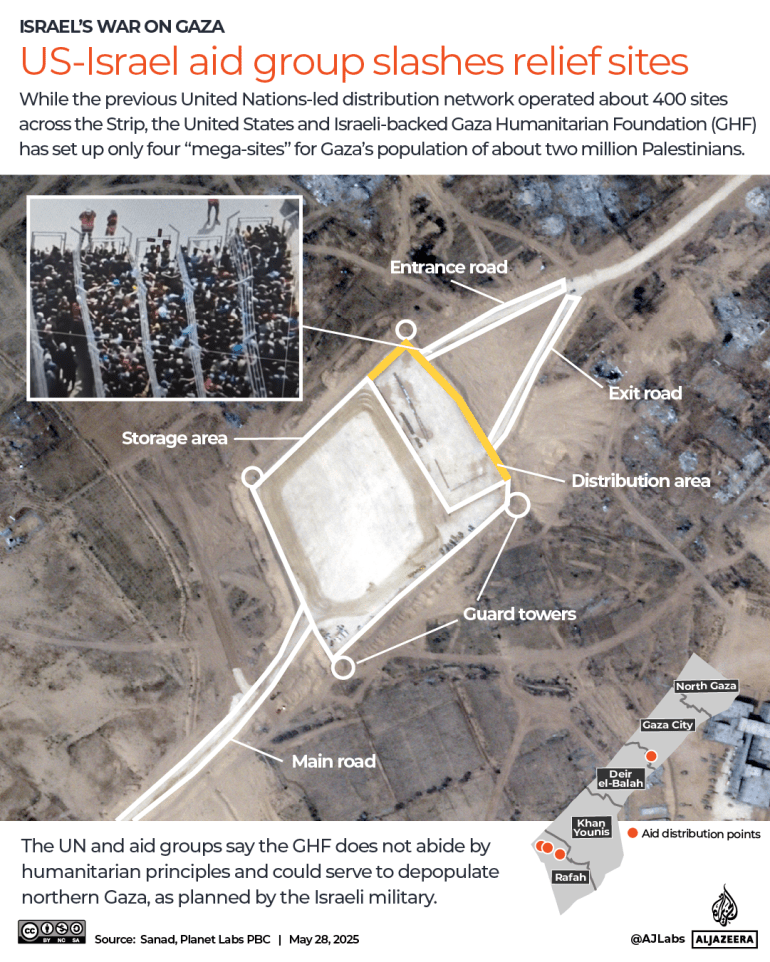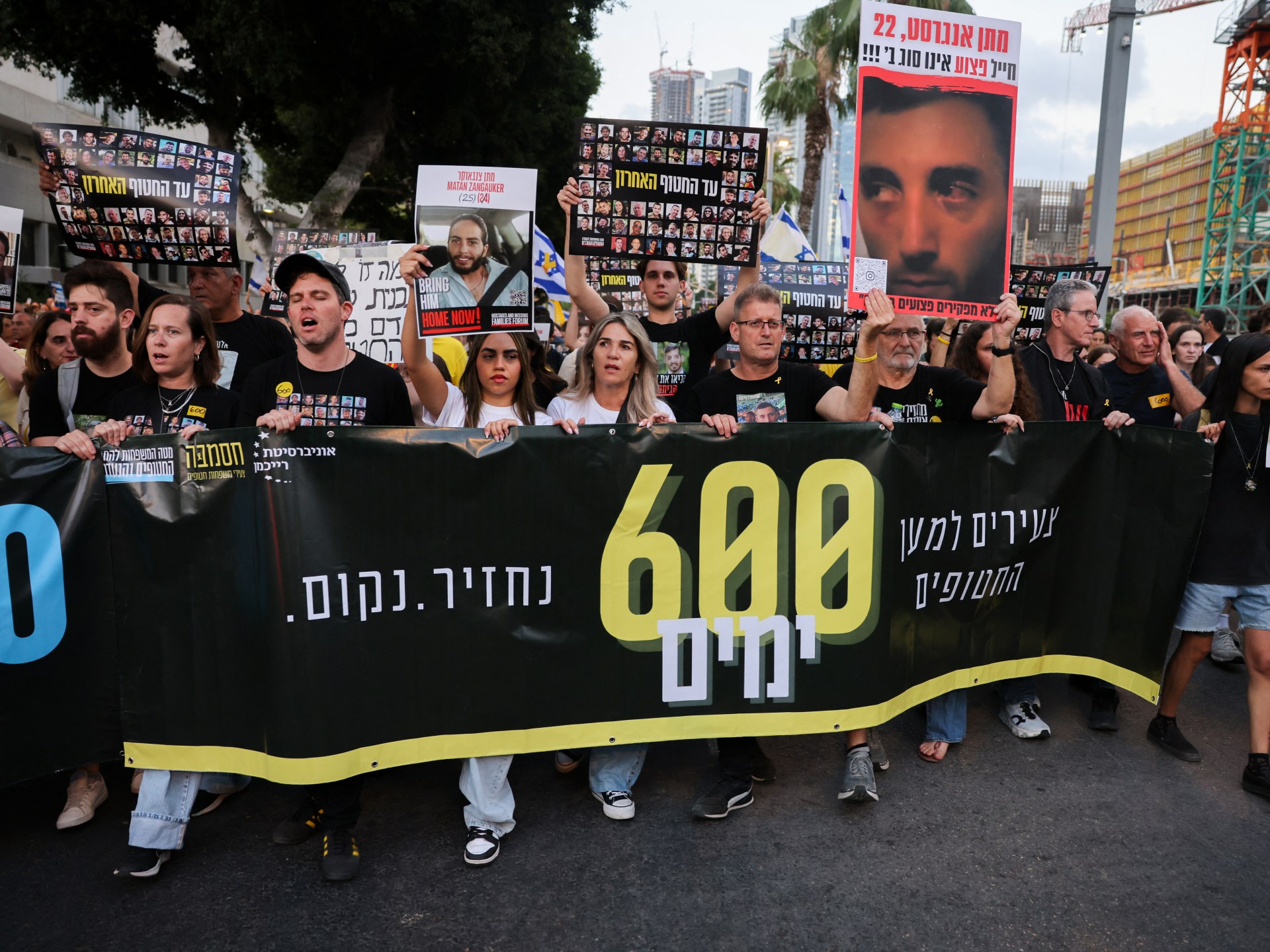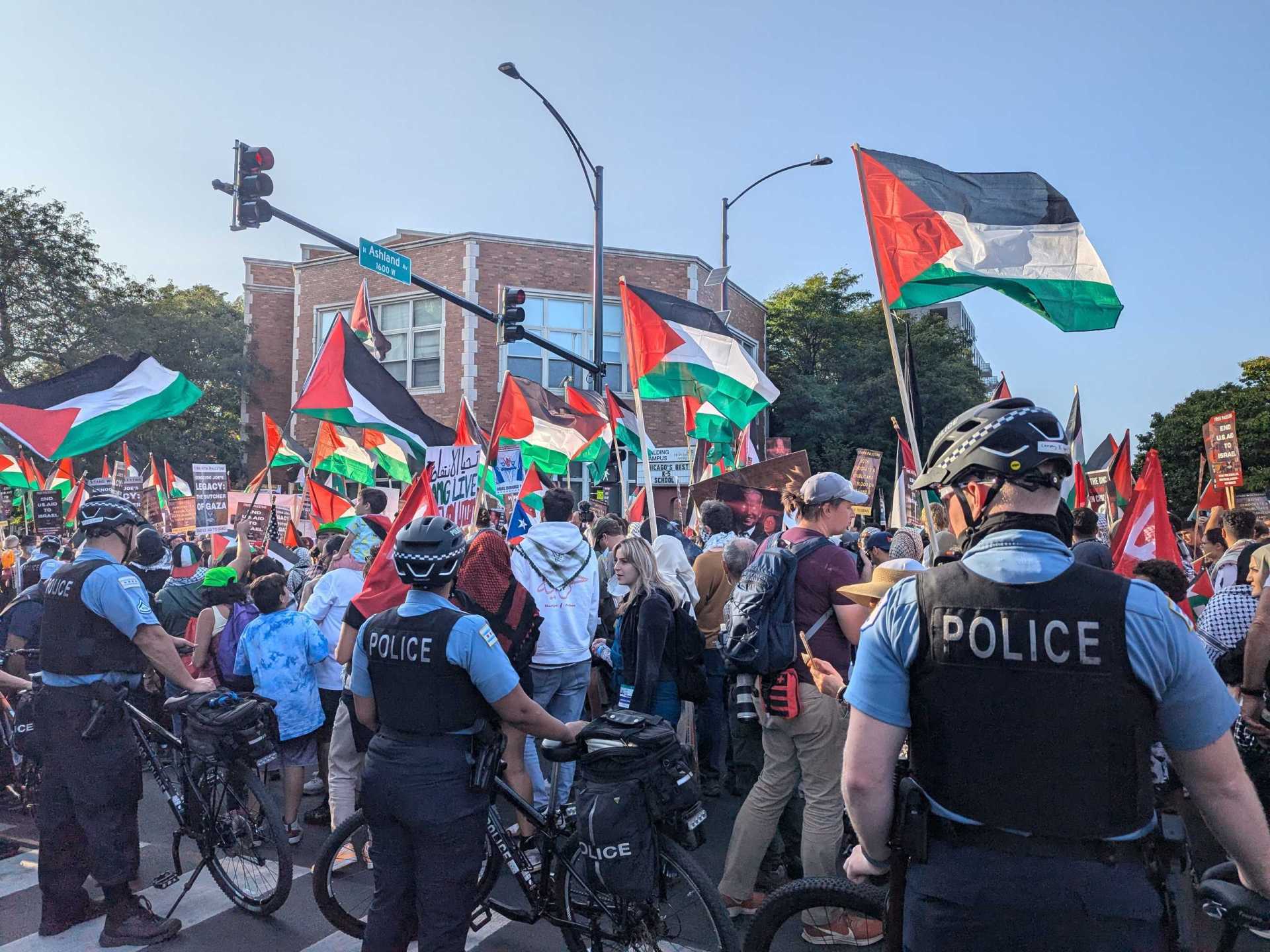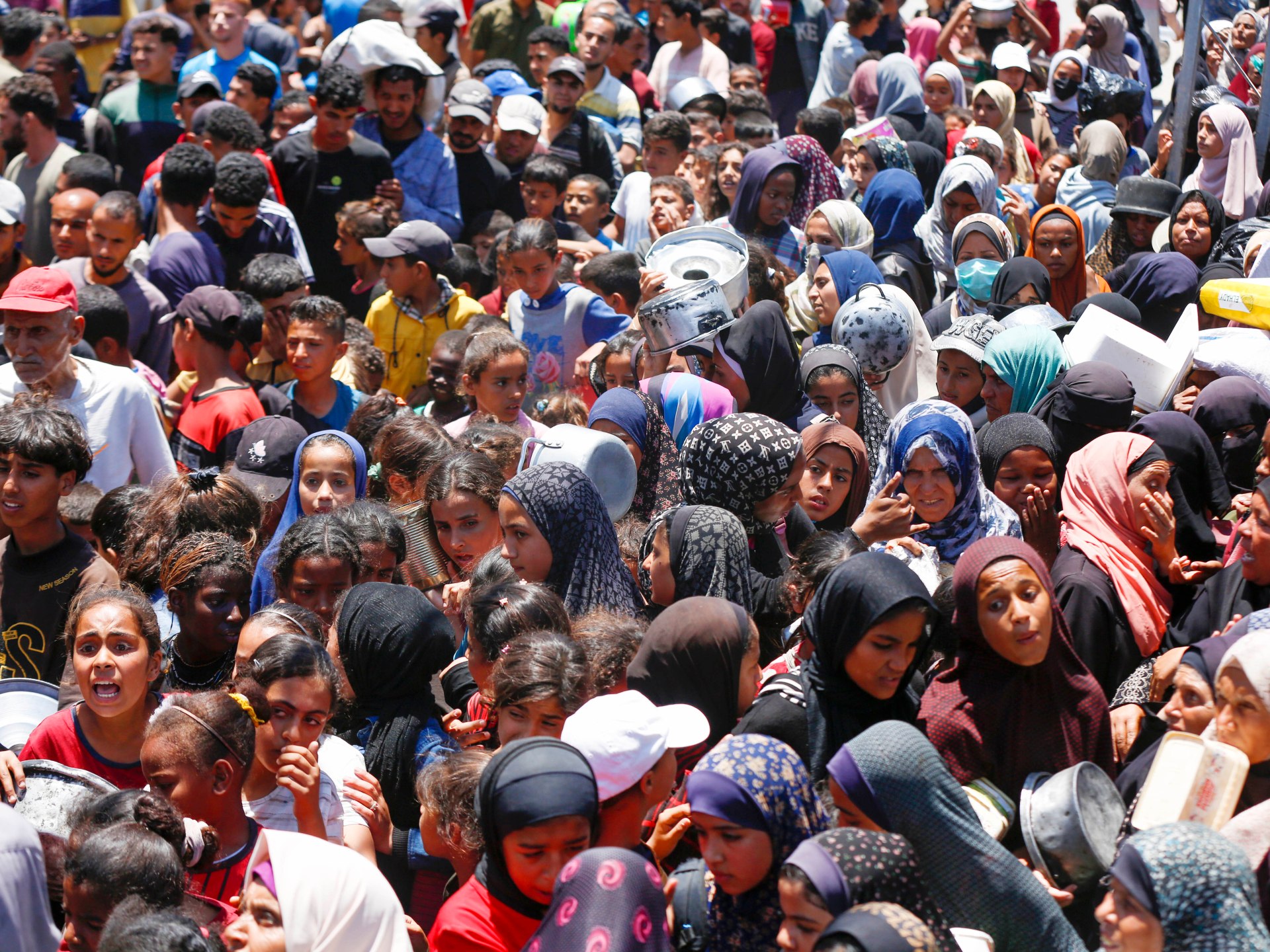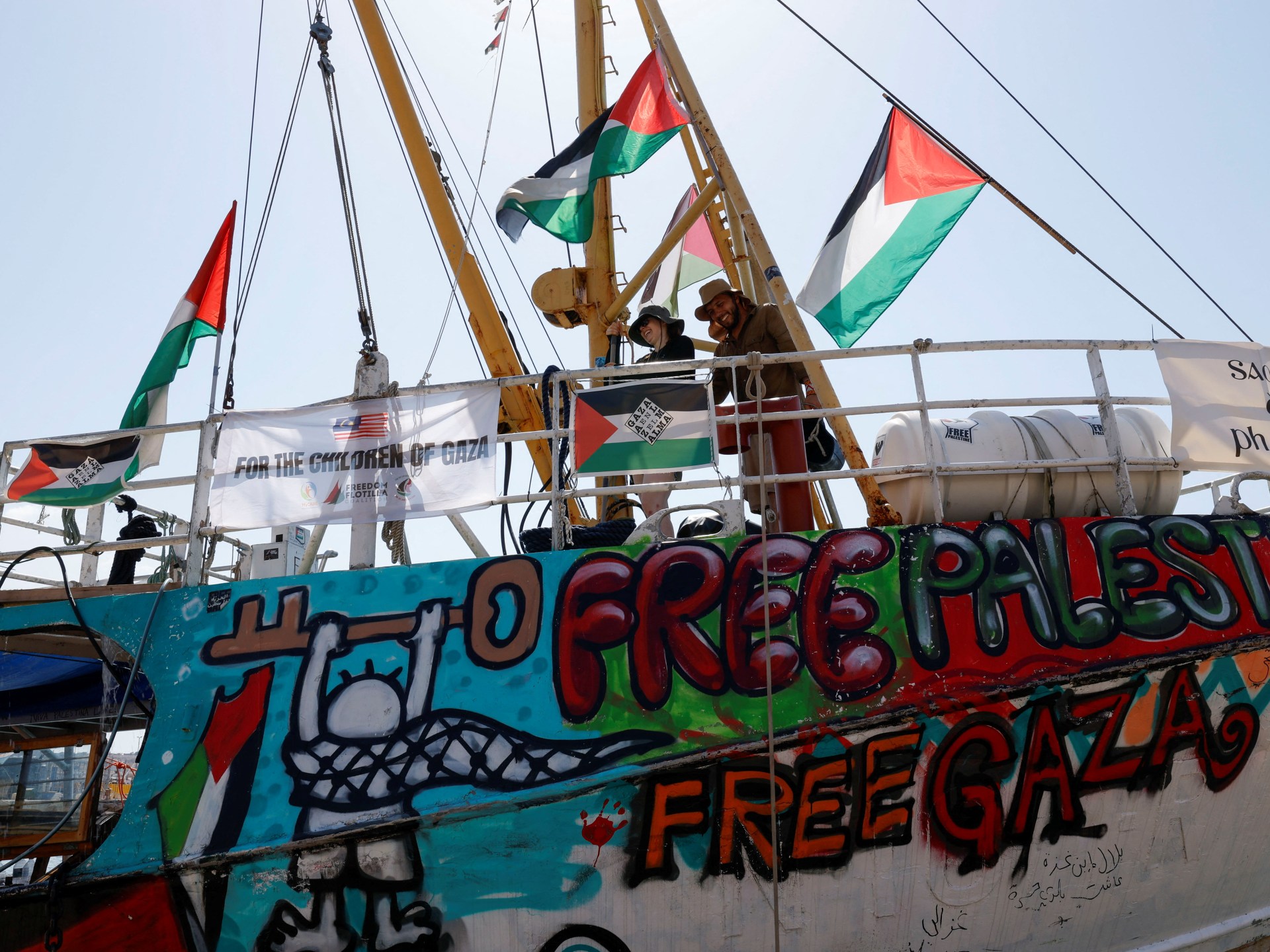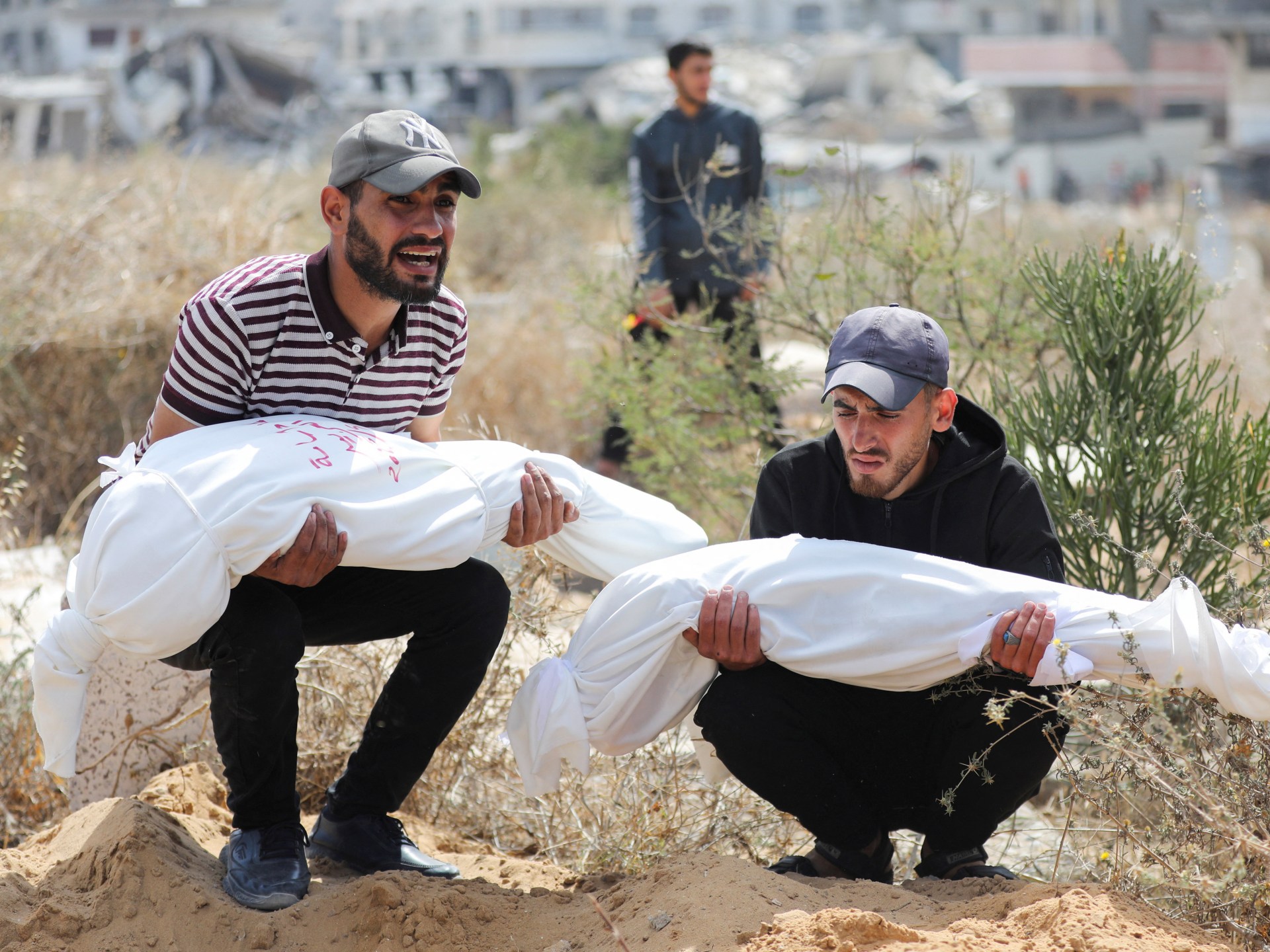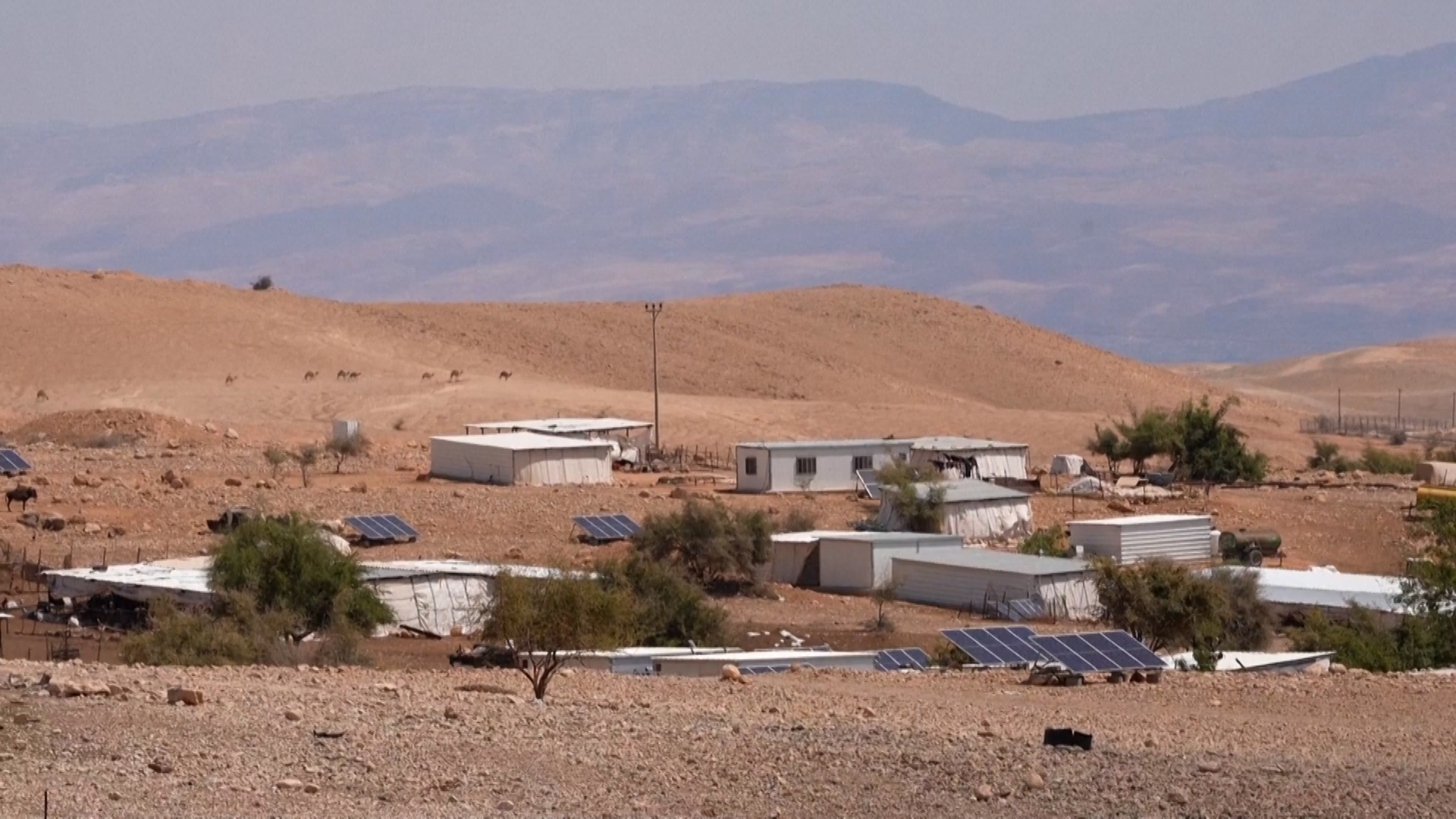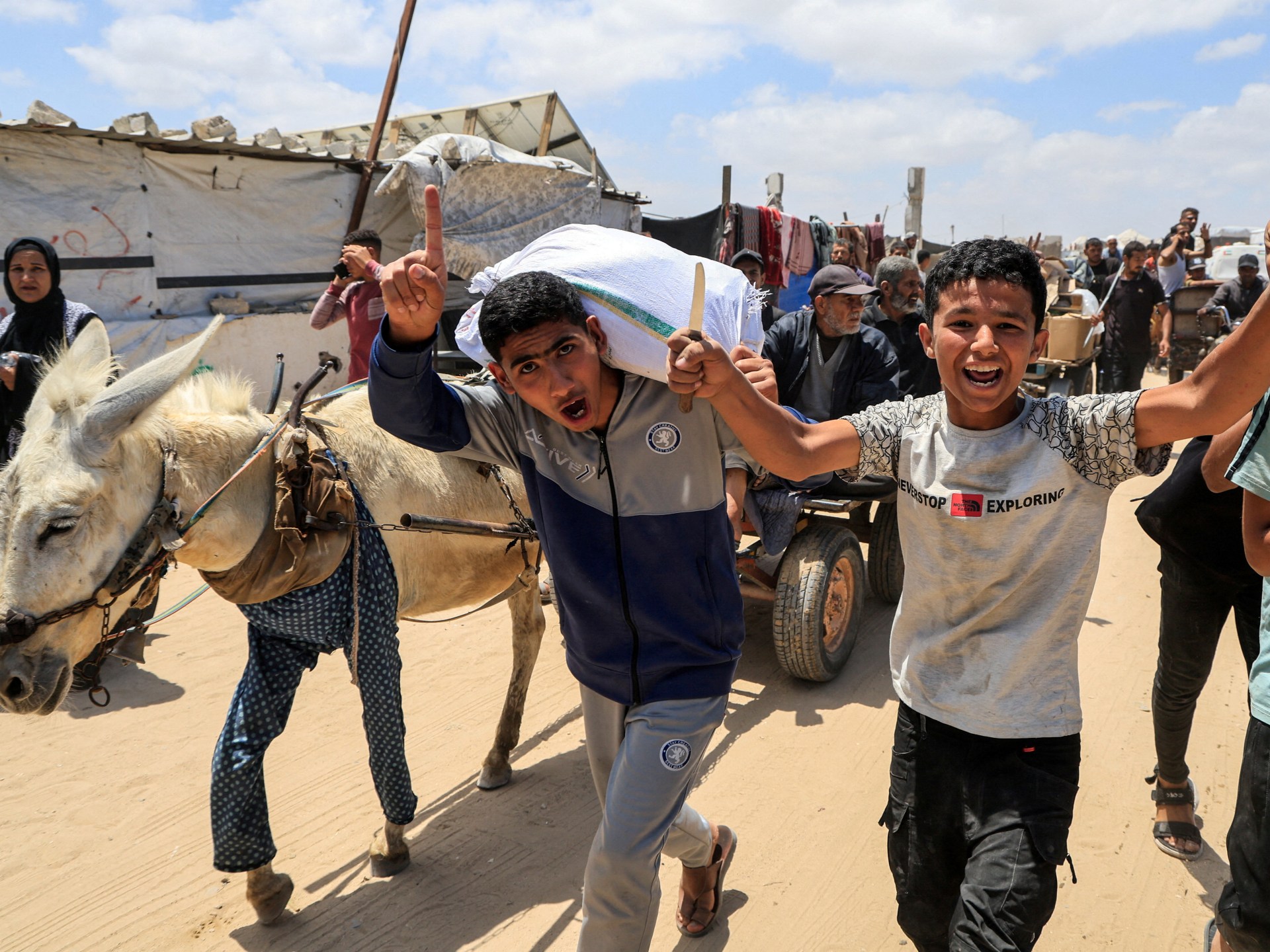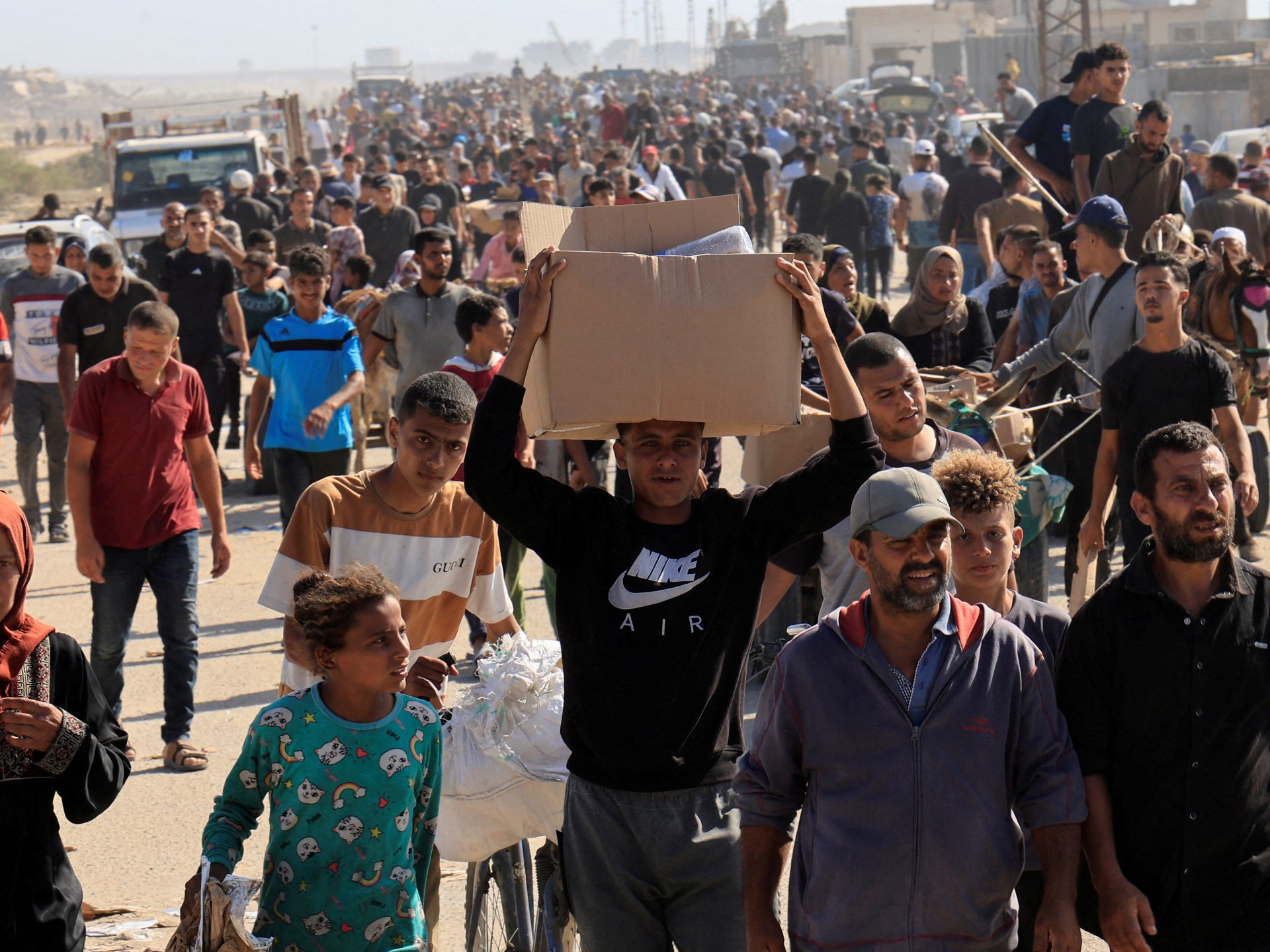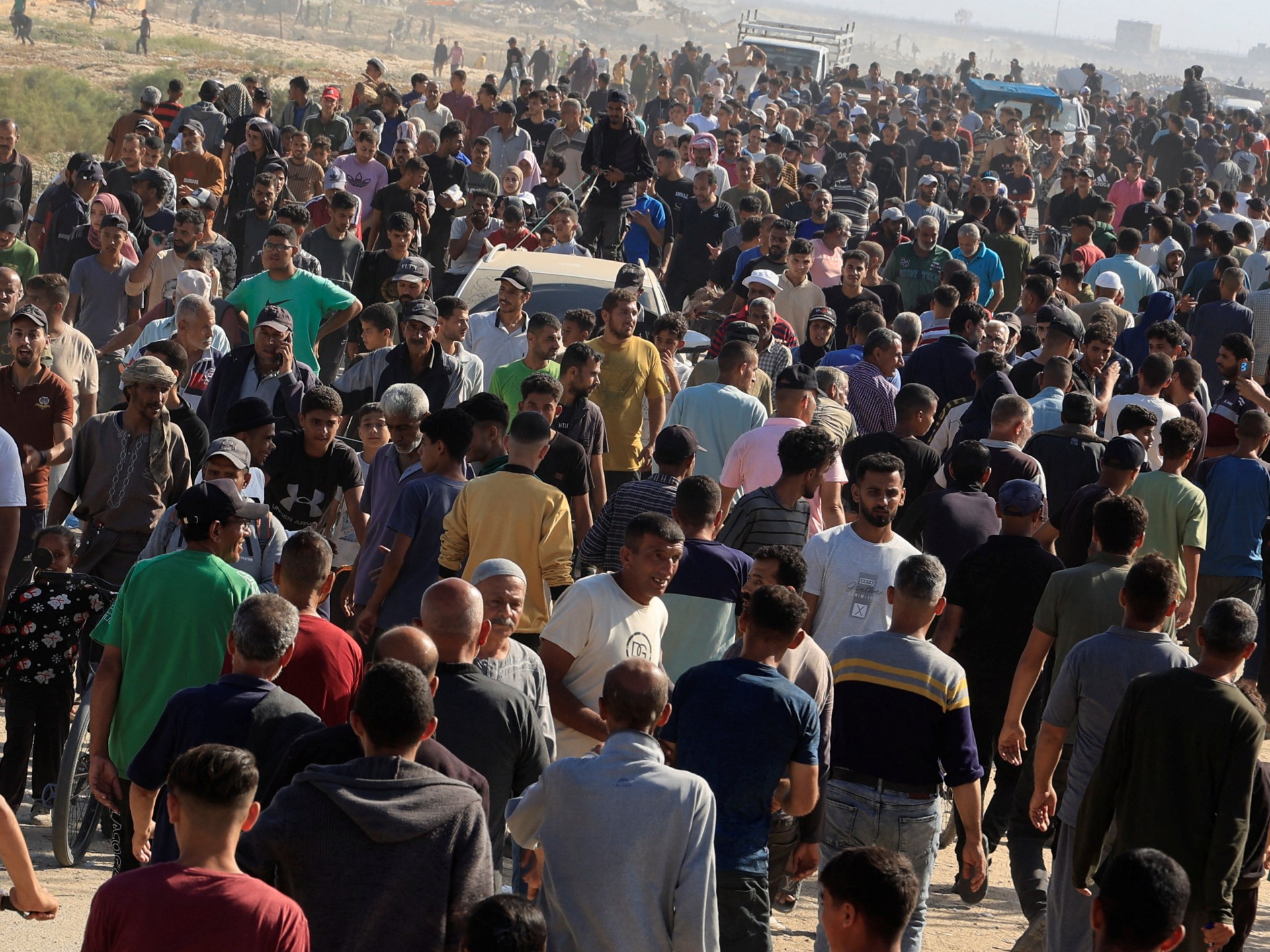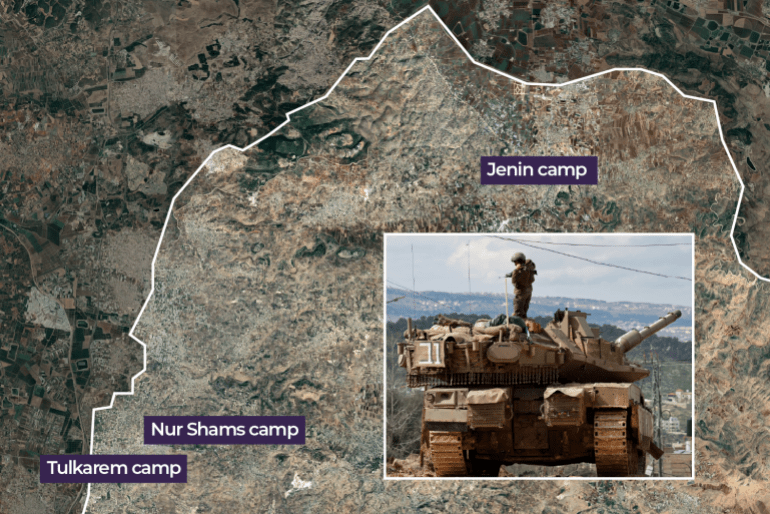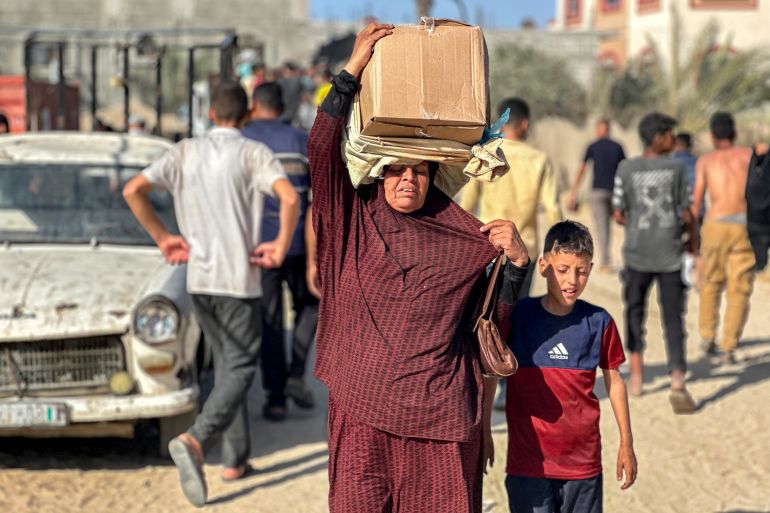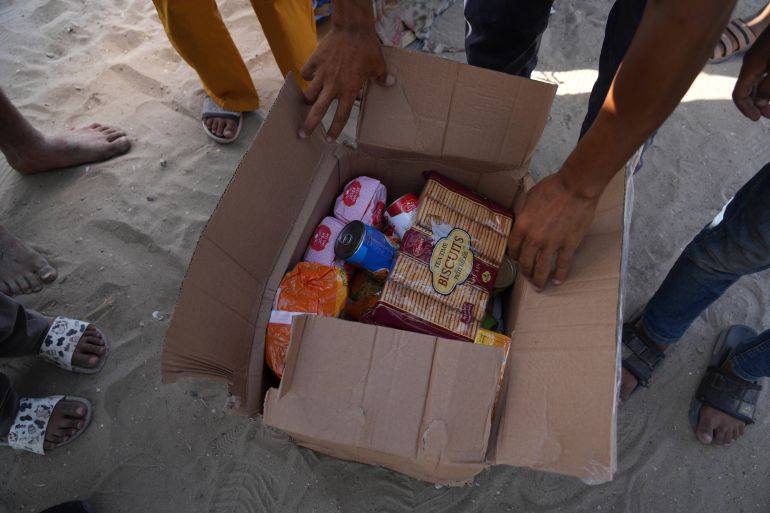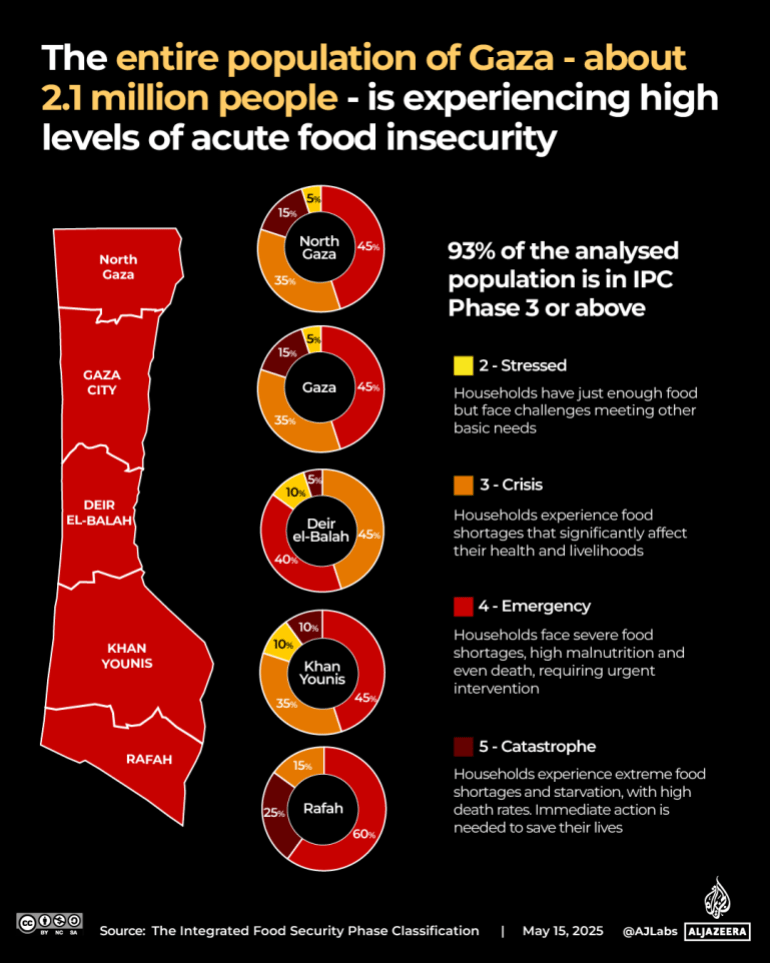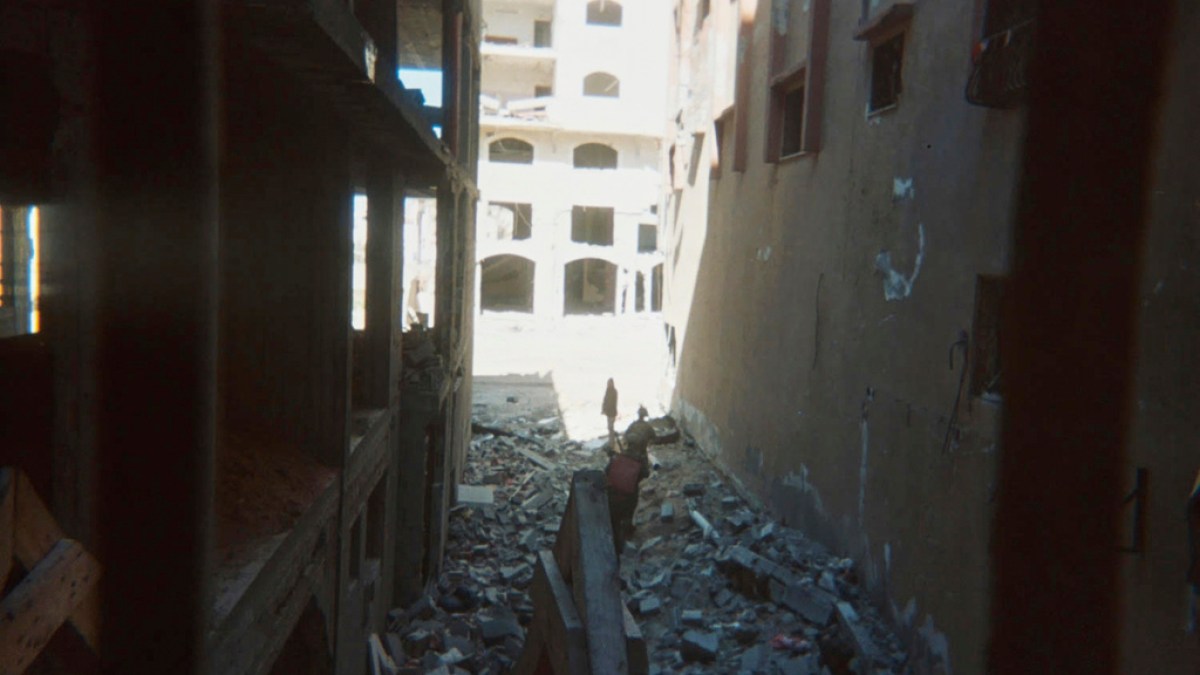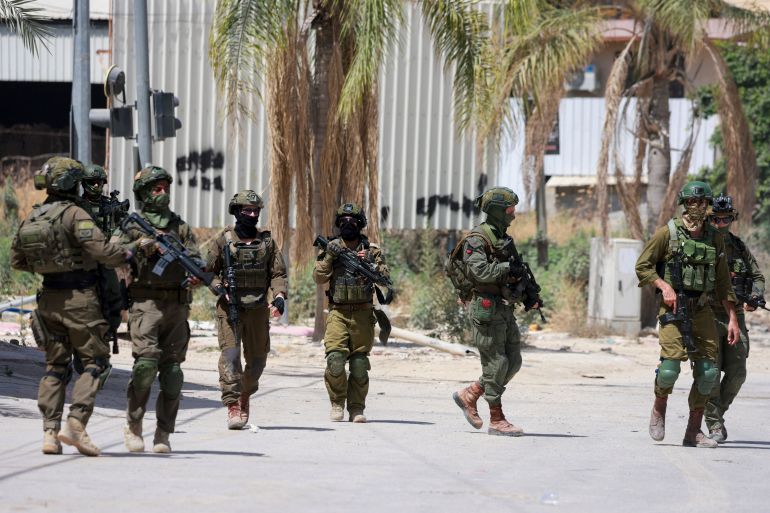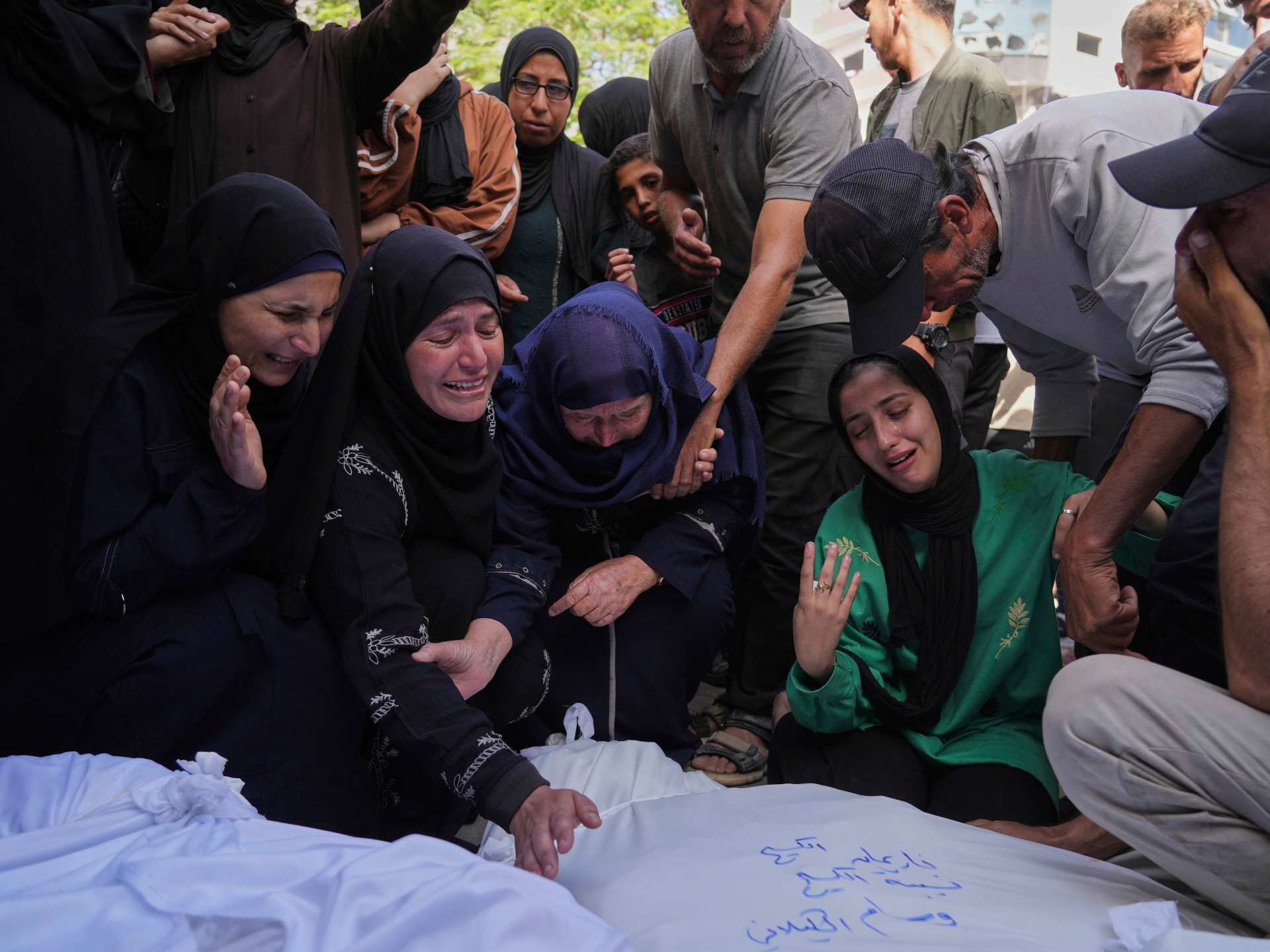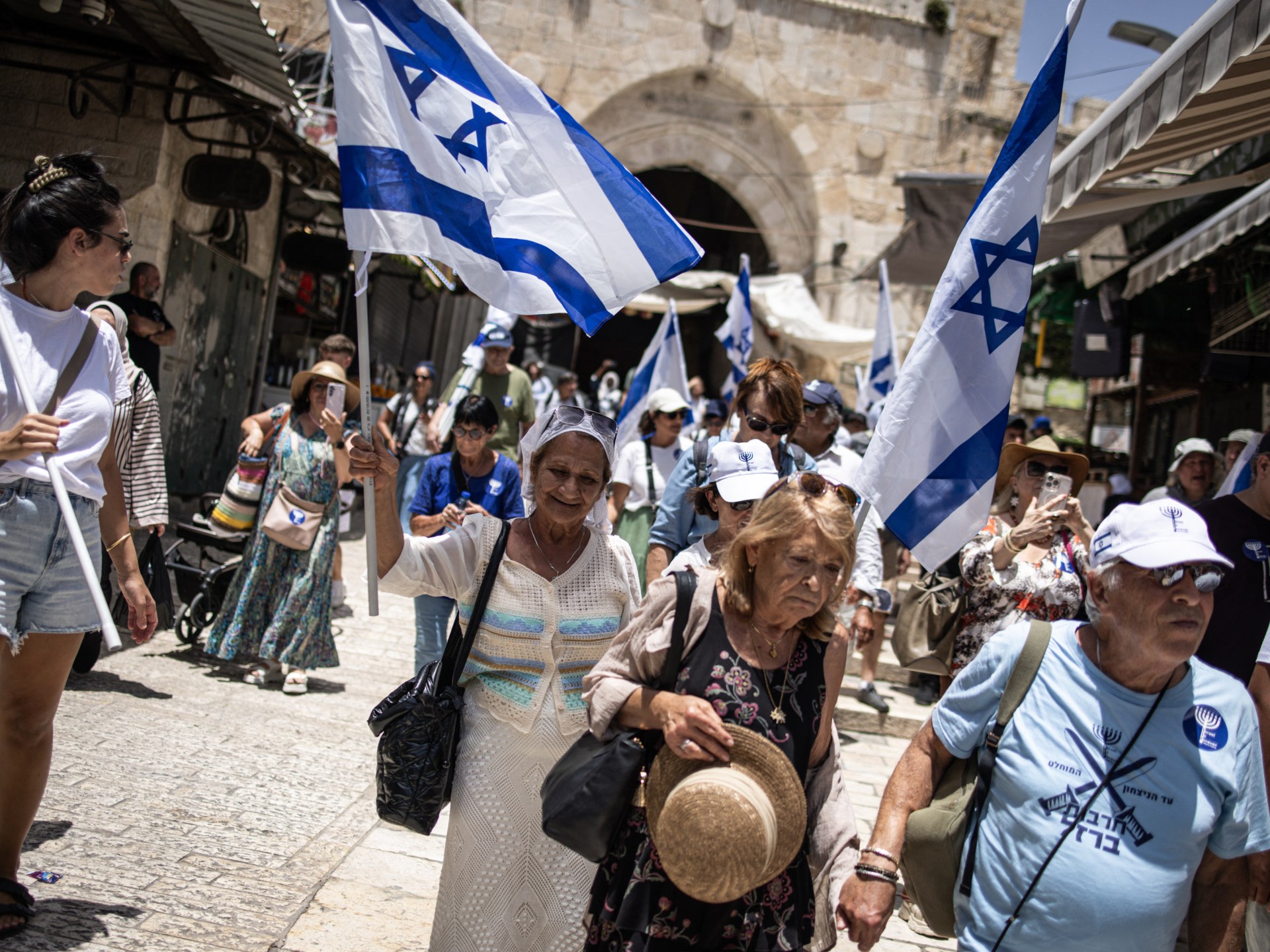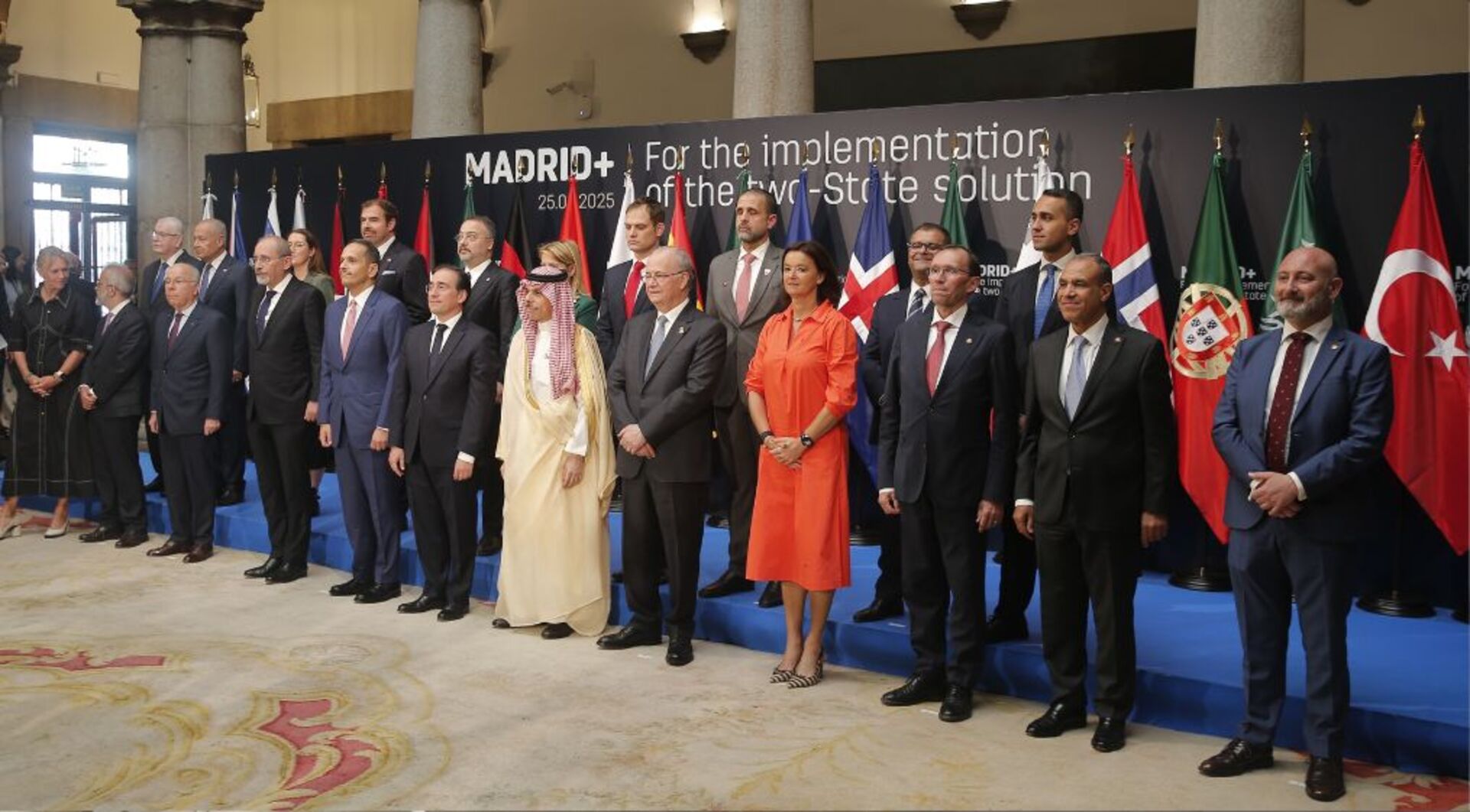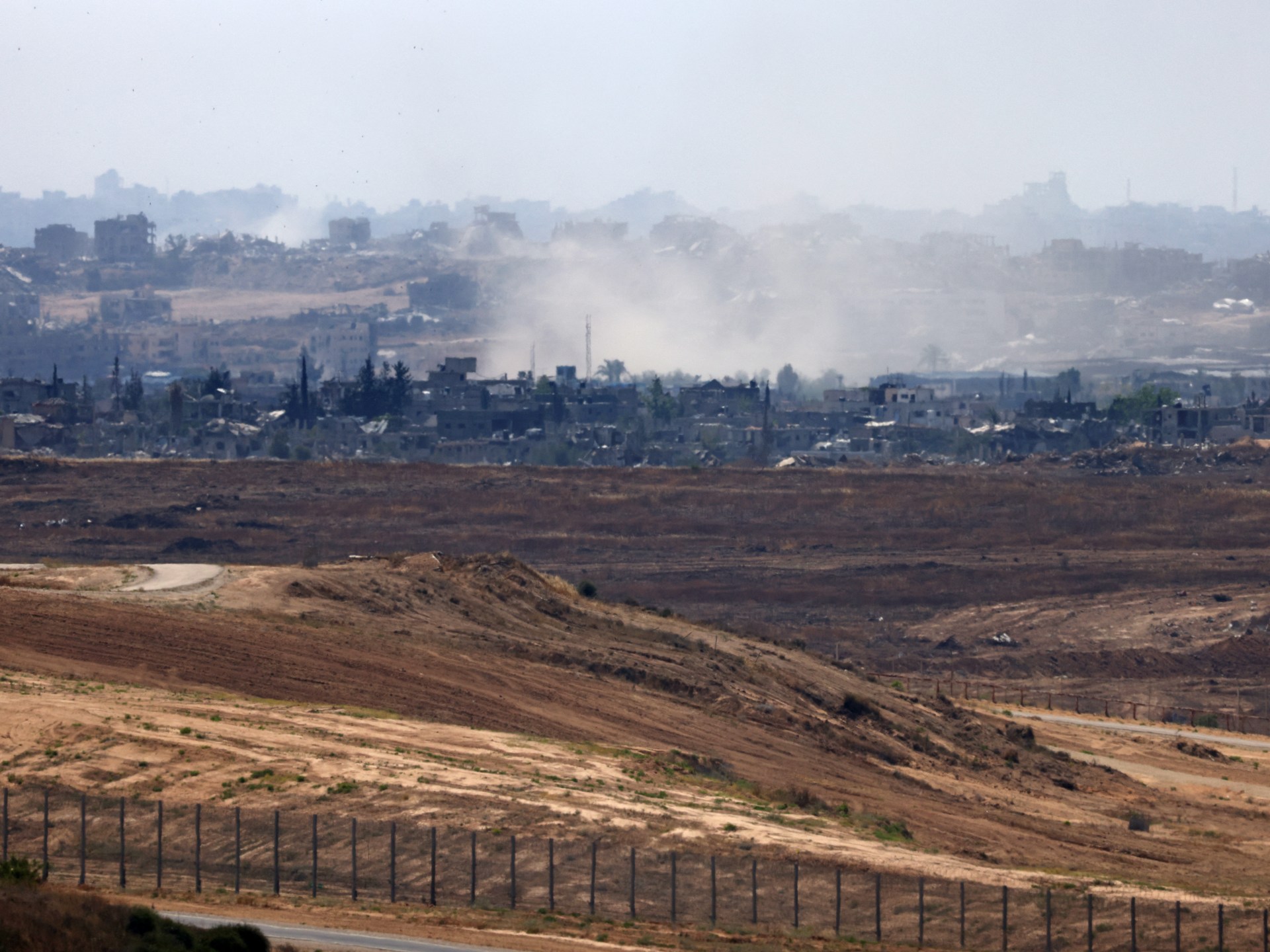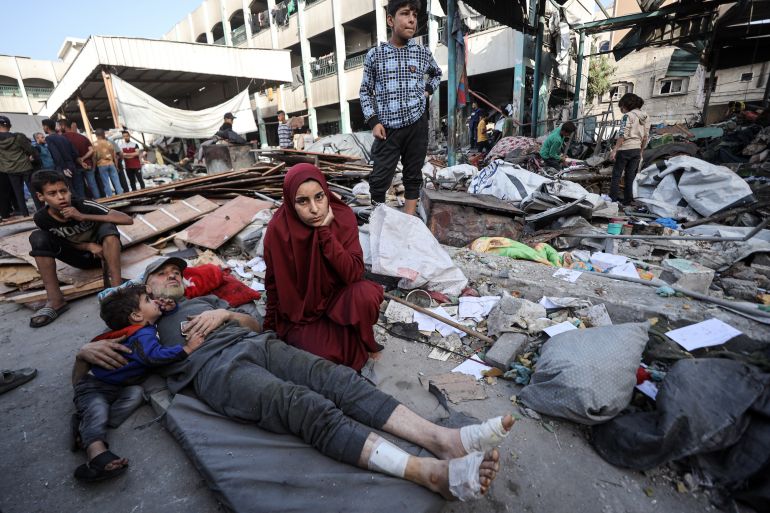Gaza ‘hungriest place on Earth’, all its people at risk of famine, UN warns | Israel-Palestine conflict News
Gaza is the “hungriest place on Earth” and its entire population is at risk of famine, warns the United Nations, as desperate Palestinians are shot at, starved, and forced from their homes by the Israeli forces.
Calling on Israel to stop its campaign of deliberate starvation and allow food into the besieged enclave, the UN on Friday said its mission to help Gaza’s Palestinians is the “most obstructed in recent history”.
“The aid operation that we have ready to roll is being put in an operational straitjacket that makes it one of the most obstructed aid operations, not only in the world today, but in recent history,” the UN Office for the Coordination of Humanitarian Affairs (OCHA) spokesperson, Jens Laerke, said.
He said out of 900 aid trucks that were approved to enter from the Israeli side of the Karem Abu Salem crossing, known as Kerem Shalom in Israel, fewer than 600 have been offloaded in Gaza, adding that a lower amount of aid had been picked up for distribution.
“I have no flour, no oil, no sugar, no food. I collect mouldy bread and feed it to my children. I want to get a bag of flour for my children. I want to eat. I’m hungry,” a Palestinian told Al Jazeera.
Reporting from Gaza City, Al Jazeera’s Hani Mahmoud said the northern part of the Strip, which includes Gaza City, “has not seen a drop of aid coming in that has been allowed in the past few days”.
“People in the central area, in the [southern] city of Khan Younis and Rafah are also struggling on a daily basis to find food supplies, particularly when it comes to flour and other basic necessities to help them survive these difficult conditions,” he added.
Palestinians leaving aid points empty-handed
After a nearly three-month blockade, Israel, under pressure from Western governments and international humanitarian organisations, allowed limited aid to enter the enclave and the resumption of limited UN operations.
However, Israel also pushed for the Gaza Humanitarian Foundation (GHF), a shadowy United States-backed private aid distributor, to provide essential food aid to starving Palestinians.
The UN and other aid groups have refused to work with GHF, saying it lacks neutrality and its distribution model forces the displacement of Palestinians.
Still, UN spokesperson Stephane Dujarric told reporters on Friday that while any aid that gets to those who need it is “good”, aid deliveries are having “very, very little impact”.
“The catastrophic situation in Gaza is the worst since the war began,” he said.

With only three of the four distribution points set up to receive aid from the GHF, people like Layla al-Masri, a displaced Palestinian, are leaving empty-handed.
“What they are saying about their will to feed the people of Gaza is all lies. They neither feed people nor give them anything to drink,” she said.
‘Parents giving children water’
Abdel Qader Rabie, another displaced Palestinian, said his family has nothing to eat. “No flour, no food, no bread, we have nothing at home,” he said.
“Every time I go to get aid, I hold a box and hundreds of people crowd over me. Earlier, UNRWA [UN agency for Palestinian refugees] used to send me a message, [and] I would go and get aid. Now there’s nothing. If you are strong, you get aid. If you are not, you leave empty-handed,” Qader Rabie said.
Eri Kaneko, UN humanitarian affairs spokesperson, also criticised the type of aid that UN agencies are being allowed to bring into Gaza.
“Israeli authorities have not allowed us to bring in a single ready-to-eat meal. The only food permitted has been flour for bakeries. Even if allowed in unlimited quantities, which it hasn’t been, it wouldn’t amount to a complete diet for anyone,” Kaneko said.
Palestinians who received GHF aid said their packages included rice, flour, canned beans, pasta, olive oil, biscuits, and sugar.
Meanwhile, the UN special rapporteur on the right to food, Michael Fakhri, described the GHF as a “bait to corral people” which “violates every principle of international law”.
“This is aid being used … to push people out from the north into militarised zones … and it’s about humiliating people, and it’s about controlling the population. This has nothing to do with stopping starvation,” he said.
Al Jazeera’s Hind Khoudary, reporting from Deir el-Balah in Gaza, said not much food is coming into the enclave as the number of trucks entering and the aid they are carrying is very limited
“Despite the trucks’ entry over the past few days, Palestinians say they have not really received any food because there have not been any normal distribution points,” she said, adding that many are going back with their pots empty.
“Some parents say they are giving their children water just to make them feel full. People say they are willing to do anything for one bag of flour or one food parcel. They are very desperate.”
